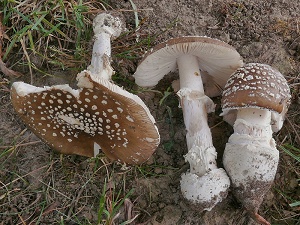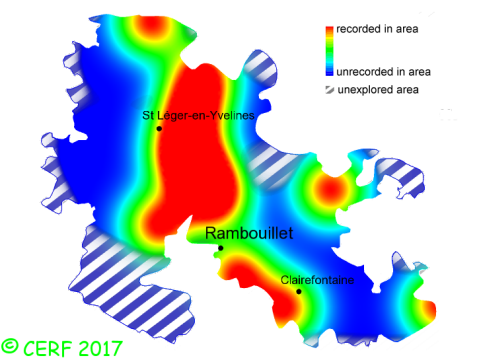| Amanita pantherina (DC.:Fr.) Krombh. |
|
|
|
|
|
|
The cap is grey brown; its margin is striate (except for the abietum high ground variety). The cap surface is covered with pure white warts that may be washed away, not viscid nor sticky. The stem is white, bulbous, with a circumcised volva ending up in a distinct gutter, with one or two belt-like helical rings above it, and a fragile, slightly striate ring. The flesh is unchanging; its taste is mild; the odour is not distinctive, or of radish when old; its texture is fibrous. The gills are white, free, crowded . The spore print is white. This species is mycorrhizal. It grows on the ground, in broad-leaved (sometimes coniferous) woods, most of the time with beech, also with cedar, spruce, fir, pine, hornbeam, oak, birch. The fruiting period takes place from July to December.
Chemical tests : flesh becoming vinaceous brown when in contact with phenol. Distinctive features : grey to brown cap covered with acute concentric warts which can be washed away, and are always pure white; stem white, with a membranous pendulous non striate ring, and spiral belts near the bulbous base Amanita pantherina is infrequent and scattered in the forest of Rambouillet, and is occasional, more generally speaking . | ||
|
page updated on 14/01/18

